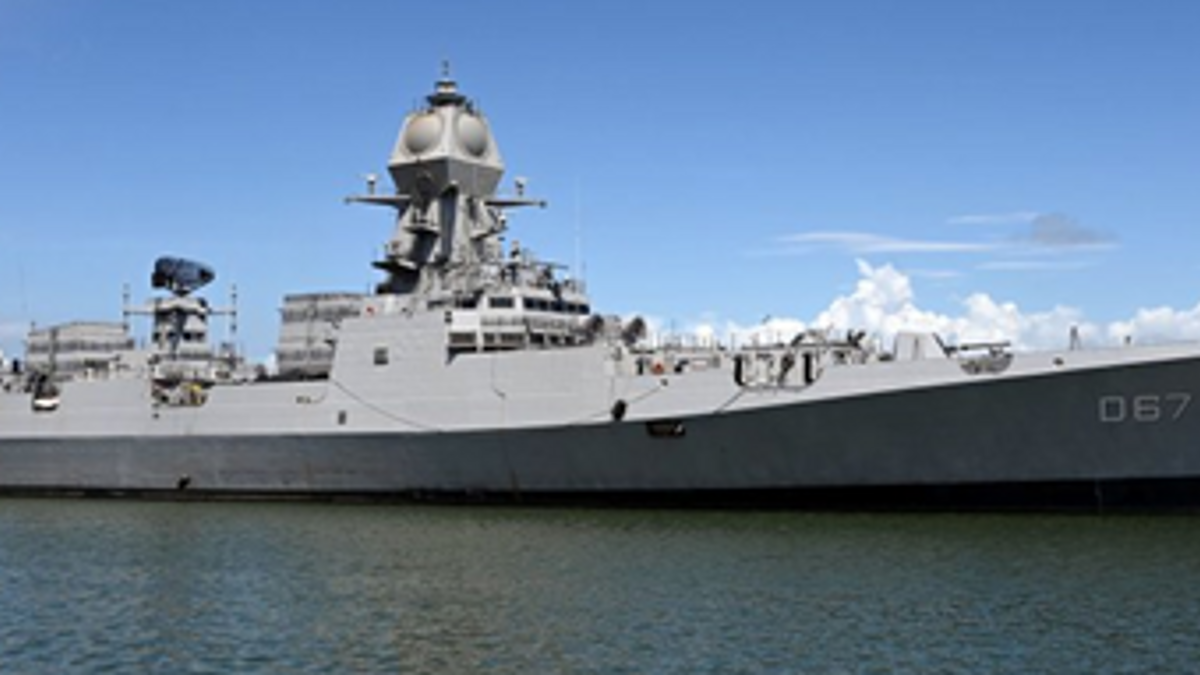
Neglected Indian Navy Regains Lost Pride
In the corridors of military powers, there is a saying, “no place can remain devoid of power. If one recedes, another expands”. This statement is increasingly becoming evident as the newer military powers gain strength. Not going far back in history, after the two past superpowers have either constricted or at least become inadequate to sustain their might in a region, the newer powers invariably expand. It is a universal fact but glaringly so in the Indian subcontinent of Asia. China is fast emerging as a superpower trying to occupy and dominate all such regions that were earlier held by USA or the USSR. The immensely grown Chinese naval assets even outnumber USA and areevidently infiltrating into Indian vicinities, be it the Arabian sea, the Indian Ocean or the Bay of Bengal. India had acknowledged this fact long back and expressed intention to expand its Navy. However, the various govts of those years and decades ignored it. The result was there for everyone to see. Indian Navy not only was unable to expand, but even lost its assets. India is in dire straits with the Chinese surrounding us. It had become difficult to safeguard the 7516 kms of coastal line with 1197-odd offshore islands besides a vast rich exclusive economic zone.
Indian Navy was made to go in limbo by the neglect of the UPA govt. Their combat assets had dwindled down alarmingly low, unable to safeguard the three surrounding seas. The only aircraft carrier was nearing decommissioning but new procurement of the refurbished INS Vikramaditya (signed in 2004), originally Admiral Gorchakov since 1987, was nowhere in sight. UPA govt was dragging its feet, unable to pay the escalated cost. Indian naval strength was in shambles. Similar were the stories on combat ships and submarines with no advanced vessel under procurement and no replacement in sight for the ageing ones either. Change of Indian government in 2014 has brought eternal blessings for the Indian Armed Forces, esp Indian Navy. Today, total Indian Naval assets stand at over 285, with nearly a dozen and half of Submarines incl nuclear ones (some with very advanced technologies), a substantial increase since 2014 with indigenous push.
India witnessed a landmark event in the history of indigenous warship building under ‘Atmnirbhar’ ambitions. INS Vikrant with advanced technologies was commissioned recently in Nov 2022. In the last 7 yrs nearly 30 major Naval assets have been already commissioned and 45-odd are at different stages of construction with all but two indigenously under “Atmnirbhar Bharat’ plans. Recently on 17 May 22, two frontline warships Surat a Destroyer and Udaygiri, a Frigate was launched concurrently at Mazgaon Docks, Mumbai.
INS Surat is Project 15B ship, the next generation stealth guided missile destroyers with a significant makeover of the P15A (Kolkata Class) Destroyers. This ship has been built using the Block construction methodology which involved hull construction at two different geographical locations joined together at MDL, Mumbai. The first ship of this class was commissioned in 2021. The second and third ships have been launched. Surat is the fourth ship.
‘Udaygiri’ is the third ship of Project 17A Frigates. It is the reincarnation of erstwhile Leander Class ASW Frigate. Under the P-17A program, a total of seven ships (04 at MDL and 03 at GRSE) are under constructions. Various novel technologies like Integrated Construction Concepts, Project Data Management/ Project Lifecycle Management (PDM/PLM) etc have been adopted for the first time in these indigenous Warship Design and Construction. The first two ships of P-17A Project, were launched in 2019 and 2020 at MDL and GRSE respectively. Both 15B and P-17A ships have been designed in-house by the Directorate of Naval Design (DND). Approx 75% of the equipment and systems have been placed on indigenous firms including MSMEs which is a true testament of ‘Atmanirbharta’ in the country.
While the number of the assets are increasing, their teeth too are becoming credible with the introduction of Ships/Subs equipped with surface to surface ballistic missiles, Ship to ship & air to ship augmented Brahmos missile (with 400 Km range) ship to air & air to air missiles along with electronic/digital warfare assets (in the form of ‘Shakti’ handed over to the Indian Navy very recently). Some of these new assets pose incredible power projection, desperately needed for long.
Indian Navy's second indigenous stealth destroyer of the P15B class, INS Mormugao was commissioned on 18 Dec 22. This 7400-Ton state-of-the-art ship propelled by four powerful Gas Turbines, has been built at Mazagon Dock Shipbuilders Ltd (MDSL). It contains Surface to Surface and Surface to Air Missiles, Torpedo Tubes and Launchers, Anti-Submarine Rocket Launchers and Super Rapid Gun Mount. Besides, there are advanced features like Combat Management System, Integrated Platform Management System, Automated Power Management System, Foldable Hangar Doors, Helo Traversing system, Close-in Weapon System and Bow mounted SONAR. Several major OEMs and MSMEs such as BEL, L&T, Godrej, Marine Electrical Brahmos, Technico, Kineco, Jeet & Jeet, Sushma Marine, Techno Process, etc have contributed in the building of this modern ship. Besides, new procurements of indigenous advanced vessels worth Rs 76,390 Cr has been cleared by the govt in Jun 2022.
Naval power expansion by China will mandate India to dominate surrounding seas, be it Bay of Bengal, the Indian Ocean or the Arabian sea. India must raise its naval assets towards the southern tip of the Greater Nicobar so as to keep a direct vigil on the Malacca Strait and prevent any sneaker from intruding through smaller passages on the Indonesian islands. At least one more aircraft carrier with support vessels to make a comprehensive self-sustained fleet is required sooner than later. For the first time, the Indian govt has put India on a route to global power which is possible only through self-reliance that “Atmnirbhar Bharat” push has been providing. The Govt effort in enhancing the indigenous capability is laudable that will make India a force to reckon with in the coming years.


